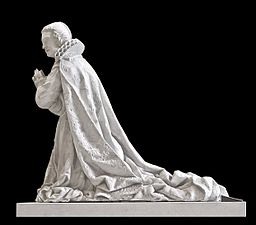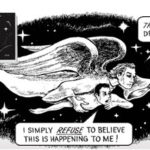Conversion Scenes: Are They Real?
 If you’ve hung around Christian writers much, especially those outside the publishers who produce books for the CBA (Christian Booksellers Association), you’ve no doubt ran across the accusation that Christian fiction often contains an “obligatory” conversion scene. As if it is a required event.
If you’ve hung around Christian writers much, especially those outside the publishers who produce books for the CBA (Christian Booksellers Association), you’ve no doubt ran across the accusation that Christian fiction often contains an “obligatory” conversion scene. As if it is a required event.
Yes, much Christian fiction does show conversions.
I’ve even got a couple in my Christian books, and it isn’t through a CBA publisher.
But author Robin Lee Hatcher disagrees on the “obligatory” idea.
The interesting thing to me is that I’ve written 18 novels for five CBA (Christian Booksellers Association) publishers thus far, and never once has an editor asked me to include a conversion scene.
Adding that the real reason you see so many in Christian fiction is:
Readers of fiction are drawn to stories that entertain them, but they also look for stories that will affirm their beliefs. Readers of romance want their belief in two people finding lasting love to be affirmed. Readers of mysteries want their belief that justice will be done to be affirmed. And readers of Christian fiction want the truths of their faith to be affirmed. Conversion scenes are a natural part of that affirmation.
I’d say yes and no. I get what she is saying: conversion scenes aren’t generally included because a Christian publisher refuses to publish a story without one, but because it is a genre expectation. However, a genre expectation also makes a particular concept or event obligatory.
Like in romance, the happy ending with the protagonists walking away hand in hand and head over heels in love, if not also walking down the wedding aisle, is the expected outcome. In fantasy, the hero is expected to win in the end, even if through great cost. There are exceptions to these, but they are the expected conventions.
But she has a point. Within Christian culture, like much any other culture, we like to have our beliefs and experience affirmed.
That is why Christian novels tend to have conversions, not in the hopes of saving a sinner, but to encourage a saint. This is exactly what so much of worship is about. We sing that song we’ve sung all our life not because we expect it to reveal an unrealized truth, but to affirm our faith in Christ. Much like people sing the national anthem or go to clubs with like-minded individuals.
The bigger issue in my mind isn’t whether a story has a conversion scene or not, but how well it is portrayed.
On one end of the Bell curve, conversion scenes low on motivation and high on author arbitrariness give them a tacked on feel. It happens not because the character is sufficiently motivated to change, but because the author wants it to happen at that point. In essence, the conversion scene isn’t connected as part of the fuller character arc.
On the other end are conversion scenes so organic to the story and character that the reader hardly notices them. Indeed, for the conversion to not happen would make the story unrealistic.
Between those two ends lands the bulk of conversion scenes. I know, I know. I can hear the protest. “No, no. Most conversion scenes fall into the first category!” Or “You’ve got it all wrong. Most conversion scenes I’ve read fit in the second category.”
You know what? You are both right. How?
A reader’s experience will dictate whether most conversion scenes come across as realistic or not.
To a person who grew up in the church, where conversion was more a realization of what they believed than a decision made at one moment, most conversion stories aren’t going to feel as realistic. In contrast, someone who had a radical conversion moment, such conversions are going to feel real.
Someone who grew up seeing people converted regularly will tend to have fewer issues with conversions in fiction. In short, one’s overall experiences will vastly influence the believability of a fictional conversion that lands in the middle of the bell curve.
By way of example, in growing up and through most of my adult life, I rarely spent much time around people who cussed a lot. Sure, I experienced it here and there, but by and large the people I hung out with didn’t cuss. If they did, not around me.
Consequently, a book with a lot of cussing doesn’t feel realistic to me. It takes me out of the story. Meanwhile, someone else whose parents cussed regularly, or most of their friends do, is going to feel like such language makes the story more true to life.
Believability is based on our own beliefs and life experiences.
Take the conversion of the “journalist” in the God is Not Dead movie. The whole movie she is out to prove this whole God thing is nonsense. Within a few minutes of confronting the Duck Dynasty group about their faith, she talks with the singing group and converts, seemingly out of the blue.
From my perspective, that conversion falls into the first category. Not that it is impossible, but there wasn’t much character arc foreshadowing indicating she was struggling with her faith that God didn’t exist.
However, someone who had such a Pauline conversion, or watched it happen frequently at church, that conversion will look quite believable. It all goes back to any one person’s experience and beliefs as to whether it feels realistic.
Can you name some conversions in novels you’ve read that felt real to you? Can you identify some that didn’t ring true? Why or why not?










































Good summary. I think genre expectations have a lot to do with it, combined with a very high percentage of CBA readers who are quite quite conservative. Different topic, but my niece who writes Christian women’s fiction included a damn in her book, an organic expression from a character who was failing in life but eventually got back on the road to restoration. A reviewer marked her book as one star saying there were vulgarities in it! Hello. There was one word. Another commented on her blog that in her family growing up she wasn’t even allowed to say darn because it was a substitute for damn. Sheesh. No wonder a lot of “Christian” fiction is formulaic – it’s not really Christian, it’s just conservatively prudish to meet the expectations of a (large) segment of readers (and to avoid those one stars).
Lyn,
Since you mentioned profanity in a Christian novel, here’s an article I’ve written recently on the subject: @#%*!!, or Dirty Words & the Christian Author – Part 1
On the subject of this post: I’m currently writing a conversion scene in my WIP so this post was helpful. In my debut novel, Johnny Came Home, their is an unsuccessful conversion attempt. I put it there because it was natural for the character, a preacher, to attempt to share the Gospel… and natural for the person listening to reject it for the reasons he did. It also served as crisis point for the preacher, sort of a What do you do when everything fails? moment. We’re given the Great Commission, but I think sometimes we forget that it is God who grants repentance not our arguments that convert.
I also think that another reason why conversion scenes are so common in Christian fiction is the writer’s need to resonate with the reader. Christian books are generally written to Christian audiences. Conversion is one experience all Christians have in common.
Likewise, I think another reason conversions are common in Christian books is the idea that Christian fiction ought to be evangelistic, that it ought not only show the truth about God and Christian doctrines, but show also the hoped-for unsaved reader their need for salvation and how they might receive it. Authors hope to generate a larger audience and are, thus, very aware of their responsibility to the Great Commission if the opportunity exists.
I have actually read very few stories that contain a conversion scene. One I read recently did feel rather forced because it was intertwined with a romance in which the Christian male protagonist was attracted to the unbelieving female–and subsequently led her to Christ. I’ve heard of people with romantic entanglements leading one another to the Lord, but I’ve never witnessed such a thing and never knew anybody in person who did so. So, as per what you said, the material being outside my experience made it seem unrealistic (though at times I read things outside my experience and they seem right anyway).
I think an important factor about conversion scenes is that Evangelical Christians believe such a thing exists! You’ll see secular science fiction writers continually talking about how evolution, the struggle for survival, has shaped this or that alien species. Such a discussion is part of the landscape for them, because random, purposeless evolution driven only by survival IS where they see life coming from. We Christian writers see a message from and a response to God as an ordinary part of human existence–therefore we are likely to portray it.
I don’t think conversion can be portrayed effectively as something incidental to the story. It’s too important. For the best examples in literature I can think of, the journey of conversion–before, during, and after–*was* the story, and it wasn’t a quick fix. Omit it altogether if you’re going to present it superficially, like a tick-mark on a checklist or changing a character’s t-shirt.
We’re talking about a life transformed. Go big, or go home.
Victor Hugo’s Les Miserables comes to mind. http://www.gutenberg.org/ebooks/135
This is a new and interesting take on the “conversion scene”! I have to say, I have this idea of a cliche conversion scene that, in actuality, I’ve never (or rarely) seen in real Christian fiction. Most Christian fiction I’ve read does have conversion scenes, but they’re very organic and natural, not stilted. I avoid bad books, though, so maybe that’s why. 😉 A character can’t just have a conversion “scene” – they generally need a conversion *plot arc*, and it must be well-done.
That makes a lot more sense to me.
I really appreciated this perspective! It makes a lot of sense. I had to write a conversion scene in the story, because it was part of a conversion arc, and just made sense with the character. However, since I came to faith early, I did some interviews and research, and the variety of ways people came to Christ was astounding, as was the way that faith manifested in their lives afterwards. For some, it was a complete switch over, without the emotional drama, but for others it was this long, drawn-out struggle. It really helped give me insight on how to write that kind of scene.
Another thing I had to come to grips with is that for a secular audience, a lot of people are just going to think any kind of conversion is crazy. Even the disciples had to deal with flack about their faith in Jesus–and that was when He was on earth, working miracles! The Good News is just too good to be true, and too outside the world’s wisdom for them to get it. Since I write novels with a mix of Christian and non-Christian characters (and no, not all the non-Christians convert, and they do represent different faiths as well as atheist/agnostic), I feel this disbelief is an important thing to show.
Also, one thing that’s important to realize is how you write a scene too. It takes skill and good editing and a strong knowledge of character and plot to pull it off well. Otherwise a conversion you pulled directly from a true story can seem fake to Christians AND non-Christians.
Interestingly enough, the most shamelessly blatant conversion scene I’ve ever read wasn’t in a CBA-published book, it’s in that old hoary classic ROBINSON CRUSOE. In the words of the Eleventh Doctor, “I was not expecting this!”